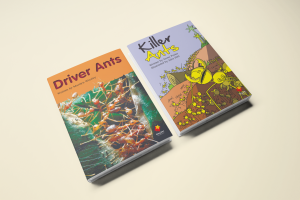 Why Use Paired Texts When Teaching Genre Units
Why Use Paired Texts When Teaching Genre Units
Using genre, or text type, as an overarching structure for reading and writing units of study is fairly common in classrooms today. In these genre units, teachers highlight expository forms such as reports or explanations, opinion forms such as advertisements or persuasive arguments, and narrative forms such as fairy tales or biographies. Throughout genre units, teachers read aloud and closely examine examples of the genre, drawing students’ attention to elements of craft exemplifying the genre. Genre units are typically several weeks long and provide a much-needed exploration of how specific kinds of texts work.
Unfortunately, sometimes within genre units, the genre functions more like a theme than a true unit of study (i.e., all literacy instruction within the class begins to coalesce around the genre). The genre is defined as a checklist of elements rather than as having intentional purposes and using certain structures to communicate ideas in particular ways. In many genre units, as well, students read and write almost exclusively within the genre under study. So, rather than selecting and composing texts based on individual curiosity, interest, need, and purpose, students spend their time reading and writing in the teacher-designated genre. While it is completely appropriate to ask students to try reading and writing within a genre, sometimes the application of strategies and skills associated with the unit reflects “doing” genre more than “using” genre to meet a reader’s or writer’s purpose. What teachers know is readers need opportunities to explore a genre. The challenge is this exploration can’t be at the exclusion of other genres, or text types, for weeks on end.
This is especially true if the genre determines guided and independent reading texts. Here are three reasons why using a variety of genre in guided and independent reading is important, regardless of the focus of a whole class/genre unit:
- Reader preferences: Readers of all ages like choice in reading, whether that choice is topic or genre, digital or paper. And, all readers are more likely to engage with a text when they bring something to the reading, whether that something is background knowledge or just plain curiosity and interest in the topic. If readers have to wait weeks before being able to read texts they are interested in because it doesn’t fit with a genre unit, readers may begin to disengage. Okapi’s Flying Start to Literacy™ texts are designed as fiction and nonfiction pairs and include a variety of genres with concept connections between the books to support students’ interests. These paired texts are specifically designed with captivating topics and storylines alongside fascinating photography and illustrations. They offer a practical way to build content and vocabulary knowledge with a nonfiction book to support further exploration of concepts while reading a complex fiction text. In addition, teachers can feel secure knowing their students are experiencing a variety of genres necessary to broaden each reader’s abilities.
- Understanding the alignment of fiction and nonfiction: The key to being a proficient reader is understanding how ideas and messages are communicated and supported through an author’s decisions within a genre. Experiencing paired texts written in varied genres but with similar concepts demonstrates for readers how the genre can be used intentionally by an author to express ideas. Readers can see how nonfiction writers organize their multitude of facts and ideas, then, in the paired text, notice how some of the same ideas inform the fiction selection (these links are unmistakable in well-crafted, paired texts connected through similar key concepts, such as Flying Start to Literacy™ texts). Readers and writers immediately experience how fiction authors weave information throughout a story to make it more believable and relevant. As readers of paired texts, students assuredly use background knowledge gained from nonfiction texts to support meaning-making in fiction. Texts with related concepts and ideas, written in various genres, also provide clear models of how genre selection affects meaning-making, supporting students as they write for themselves.
- Ensures students have exposure to a variety of text types: Time in a school year is limited and teachers can’t possibly do every genre justice through a sequence of genre units (and, really, they aren’t meant to). So, if we are going to teach for long time periods using single genres, we must broaden our thinking about how the genre works. For example, when teachers think about narrative, they must think beyond “fiction” (or a more-narrow subset of fiction like science fiction or fairy tales) and explore how narrative, or “story,” functions in our lives and society. “Story” can certainly mean fiction but story is also how we process and record our thinking about events, whether that event is what happens after school (the personal narrative) or the steps and observations in a science experiment (a description of the scientific process). For each of these uses of “story,” the purpose and audience determine how that narrative is crafted—the language, vocabulary, and critical moments to include. Using connected texts, such as Okapi’s Flying Start to Literacy, present students with opportunities to apply their developing meaning-making abilities using a range of genre within thoughtfully-crafted pairs around engaging concepts. In this kind of genre unit, students encounter a multitude of authentic ways authors communicate ideas in a full range of genres.
While genre units can be powerful teaching structures, ensure students have ample choice and exposure to varied genres in guided and independent reading. Paired texts are a powerful way to support students to understand and use genre as a meaning-making device.
Regardless of the genre being studied, using paired texts written in the varied genre during guided and independent reading while engaged in your genre unit. Debra Crouch
